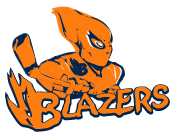Skate Fitting Tips: Getting Past the "Skate-Lore"
Here are some guidelines to help you select new skates.
Please be aware that these are general or "average" statements. They may not apply to everyone.
Boys' feet usually stop growing when the boy reaches age 14 or 15. The rest of the body may grow significantly in height and weight after this, but the feet tend to remain the same size.
Girls' feet will probably not grow after the girl reaches age 13 or 14.
If a skate looks too big for a foot, it probably is.
Shoe widths are different than skate widths. Skates are wider than shoes of the same width classification.
When purchasing skates for a growing child, allow a half-size (about 3/16 in. or 5 mm) for growing room. Generally, this allowance will provide 12 months of skating before it becomes necessary to stretch the boot or buy new skates.
If the fit is correct, the average 10 year-old child will be able to lace up his or her skates securely without assistance.
Fitting Tips
Always match the skate model to the skater's size, ability, and frequency of use.WARNING: Not every skater will benefit from a higher end skate. A boot that is too stiff can significantly hinder a skater's performance by preventing knee bend and proper edge control. Of course, the opposite is also true: larger, more aggressive skaters need a top end boot for proper support and durability.
Hockey skates fit 1 to 1-1/2 sizes smaller than shoes, for both boys' and men's sizing. For example, a size 6 running shoe will correspond to a size 4 1/2 or 5 skate.
Women's skates generally fit 2 sizes smaller than their shoe sizing. For example a women's size 7 1/2 shoe will require about a size 5 1/2 skate.
A skate fits properly only when laced up. When tightened, the laces will draw the foot back into the boot. A skate that feels too small at first can feel fine once it's done up.
On a properly fitting skate, you'll see a nice, even lacing pattern-not less than 2 1/2" from eyelet to eyelet.
A new skate should feel comfortably snug, but without any pressure points. Specific pressure points (for example, ankle bones, small toes) should be stretched ("popped") in-store to relieve local discomfort. Skates stretch a little after break-in, so a wide fitting skate will only get wider over time, most likely creating problems in fit and performance.
To truly evaluate the fit of a skate boot, relax and spend some time in it. In 10 to 15 minutes, the boot will warm up on your foot and feel quite different than when you first put it on. The way it feels after it warms up is the way it will feel when you're skating in it.
Getting a good fit takes time. When you buy skates, plan on spending some quality time in the store. It can take as much as an hour to fit you properly.
Please be aware that these are general or "average" statements. They may not apply to everyone.
Boys' feet usually stop growing when the boy reaches age 14 or 15. The rest of the body may grow significantly in height and weight after this, but the feet tend to remain the same size.
Girls' feet will probably not grow after the girl reaches age 13 or 14.
If a skate looks too big for a foot, it probably is.
Shoe widths are different than skate widths. Skates are wider than shoes of the same width classification.
When purchasing skates for a growing child, allow a half-size (about 3/16 in. or 5 mm) for growing room. Generally, this allowance will provide 12 months of skating before it becomes necessary to stretch the boot or buy new skates.
If the fit is correct, the average 10 year-old child will be able to lace up his or her skates securely without assistance.
Fitting Tips
Always match the skate model to the skater's size, ability, and frequency of use.WARNING: Not every skater will benefit from a higher end skate. A boot that is too stiff can significantly hinder a skater's performance by preventing knee bend and proper edge control. Of course, the opposite is also true: larger, more aggressive skaters need a top end boot for proper support and durability.
Hockey skates fit 1 to 1-1/2 sizes smaller than shoes, for both boys' and men's sizing. For example, a size 6 running shoe will correspond to a size 4 1/2 or 5 skate.
Women's skates generally fit 2 sizes smaller than their shoe sizing. For example a women's size 7 1/2 shoe will require about a size 5 1/2 skate.
A skate fits properly only when laced up. When tightened, the laces will draw the foot back into the boot. A skate that feels too small at first can feel fine once it's done up.
On a properly fitting skate, you'll see a nice, even lacing pattern-not less than 2 1/2" from eyelet to eyelet.
A new skate should feel comfortably snug, but without any pressure points. Specific pressure points (for example, ankle bones, small toes) should be stretched ("popped") in-store to relieve local discomfort. Skates stretch a little after break-in, so a wide fitting skate will only get wider over time, most likely creating problems in fit and performance.
To truly evaluate the fit of a skate boot, relax and spend some time in it. In 10 to 15 minutes, the boot will warm up on your foot and feel quite different than when you first put it on. The way it feels after it warms up is the way it will feel when you're skating in it.
Getting a good fit takes time. When you buy skates, plan on spending some quality time in the store. It can take as much as an hour to fit you properly.


<< Home